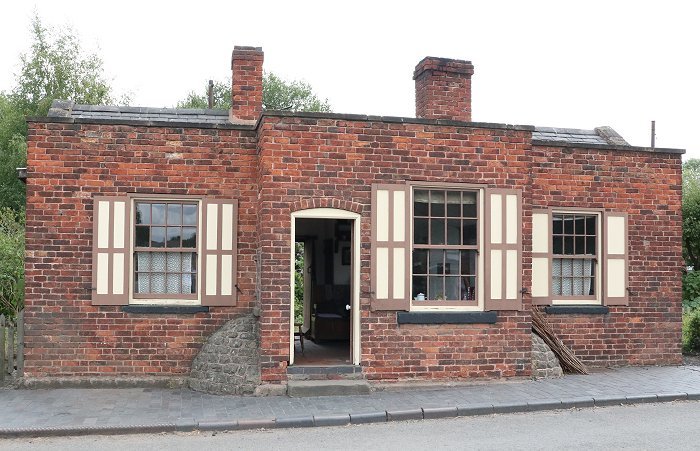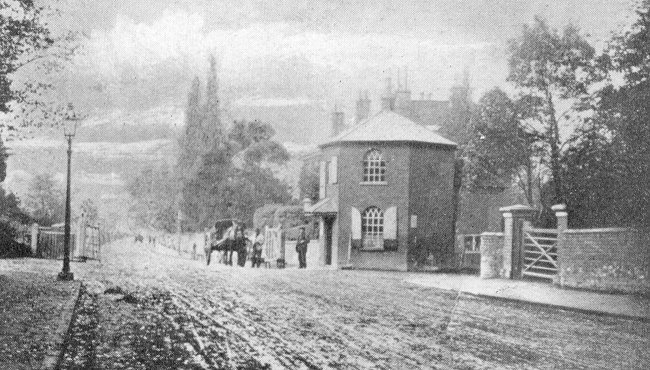|
Town Centre Roads In the second half
of the 18th century, the streets in the centre of Dudley
were dirty, unlit and narrow, with many obstructions.
The Dudley Town Act of 1791, which authorised the
Commissioners to levy a rate, was passed in the hope
that things could then improve.
Part of the Act was for greatly
needed improvements to local roads. The preamble states
that the streets and other public passages and places
within the Town of Dudley, in the County of Worcester,
are not properly paved, lighted, cleansed, or watched,
and are subject to various encroachments, obstructions,
nuisances, and annoyances, and are in some parts narrow
and incommodious for passengers and carriages. It also
stated that it would be of great benefit and convenience
to the inhabitants of the said town, and to all persons
resorting to and travelling through the town.
Unfortunately only few improvements
were made, because the financial resources and legal
powers of the Commissioners were inadequate to properly
deal with the situation. Some of the roads were in an
awful state, being nothing more than well-worn cart
tracks. Many of the roads had deep ruts and so where
unsuitable for wheeled vehicles. The situation didn’t
greatly improve until the 1840s when more funds came
from the Town Rate Fund to pay for the necessary
improvements.
Turnpike Trusts
The more important roads in the
area, connecting Dudley to the surrounding towns were
also inadequate. Improvements began in the 18th century
with the Passing of the Turnpike Acts, that allowed
turnpike trusts to be set up to improve and maintain the
more important roads in the area, and build new roads in
return for a toll, which road users had to pay.
A separate Act had to be Passed to
allow the setting up of a turnpike trust and give it the
necessary powers to collect tolls, maintain the road,
erect a toll house, and the toll gate, where the tolls
were collected. One of the first turnpikes to be set up
in the area was made by a 1727 Act of Parliament called
the Dudley, Halesowen & Bromsgrove Trust. Each Act
allowed the trust to raise tolls and keep the road
repaired for 21 years. Other Turnpike Acts were Passed
in 1742, 1773 and 1794.
The 1794 Act empowered the Trust to
construct three quarters of a mile of new road from the
Bush Inn, Dudley to Cinder Bank. Other Acts followed in
1816, 1854 and the last Act in 1876, after which the
Turnpike expired. Other Turnpike Trusts included the
Wolverhampton, Dudley & Birmingham Trust, in 1701, that
covered the road from Sedgley to Dudley, and along Trindle Road to Birmingham Road and then to Burnt Tree.
Another Act Passed in 1726, covered
the road from Dudley to Kingswinford via Holly Hall. It
was part of the Bridgnorth Toll Road. There were two
Turnpike Acts Passed in 1727. The first for the Dudley
and Pedmore Trust, covered the road from Dudley, along
Pear Tree Lane, to Lye and then to Pedmore. The second,
the Dudley and Brettell Lane Turnpike covered the road
from Dudley to Woodside, Brierley Hill and Wordsley.
Another Act in 1798, the Dudley to Rowley Regis Trust,
covered the road from Dudley, along Hall Street, past
Dixons Green to Oakham.

Woodsetton toll house in its
original location.

Woodsetton toll house, now at the Black
Country Living Museum.
The Turnpike Trusts used existing
houses at their gates wherever possible. The gate keeper
took money from anyone wishing to use the road, except
for people on foot, who were not charged. Coaches that
travelled at speed, blew their horns before they reached
the gate so that the gatekeeper could open the gates and
let them through quickly. In the 1830s, the standard
charges varied from a few pence for every horse or
animal to two shillings and sixpence for a steam powered
carriage.
By the 1830s there were more than
1,000 trusts maintaining around 30,000 miles of road in
England and Wales. By 1838 the turnpike trusts in
England were collecting £1.5 million per year from
leasing the collection of tolls, but had a cumulative
debt of £7 million, mainly as mortgages. Trusts often
applied for an extension to the 21 year period. From
1766 they were required to build milestones to indicate
the distance between principal towns on the road.
The building of the railways in the mid 19th century
made the trusts obsolete. The payment of tolls at
turnpikes was abolished by an Act of Parliament in 1878.

The old toll house and toll gates
on Penn Road, Wolverhampton. From the Wolverhampton
Journal.
Birmingham New Road
The A4123 Birmingham New Road, which was
built in the 1920s to relieve the A41 Holyhead Road
between Wolverhampton and Birmingham, has been of great
benefit to Dudley. Construction was carried out by
Robert McAlpine & Sons at a cost of £573,750. The road
took three years to build and was designed as a through
road, avoiding town centres. It was officially opened on
2nd November, 1927 by the Prince of Wales, who with the
Lord Mayor of Birmingham, travelled along the road to a
civic reception in Wolverhampton. Work began on
upgrading the road to a dual carriageway in 1939. It was
completed at a cost of £39,000. |